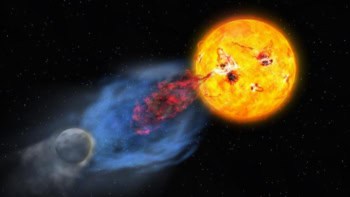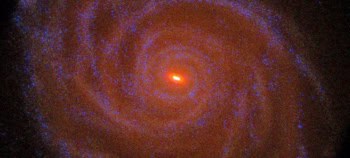Every Sun-like star collapses at the end of its life to form a ‘white dwarf’ surrounded by a vast gaseous nebula. This process is fleeting in astronomical terms, but now Yolanda Gomez of the National Autonomous University in Mexico and co-workers have glimpsed it for the first time. The researchers believe that planetary nebula K3-35 is still young and will offer astronomers the chance to study its progress for years to come (L Miranda et al 2001 Nature 414 284).

When a star like the Sun approaches the end of its life, it ejects a shell of gas before it collapses into a dense white dwarf. The star loses gravitational energy as it collapses, and this energy is converted into ultraviolet light that streams out towards the ejected shell of gas, or nebula. This ultraviolet radiation excites atoms and molecules in the nebula and makes it emit radiation at a range of wavelengths, which can be studied by astronomers.
Gomez and colleagues used the Very Large Array telescope in New Mexico to analyse radio waves emitted by nebula K3-35, which is 16 000 light years from Earth. They found a tell-tale peak in the spectrum at 22 gigahertz, which is characteristic of water vapour ‘masers’ – short for microwave amplification by spontaneous emission of radiation. These masers amplify radio waves and show that water vapour is present in the nebula.
White dwarfs heat up as they collapse, and they reach temperatures of 30 000 kelvin within a hundred years. But astronomers believe that this extreme heat destroys the water vapour in the surrounding nebula. This means that the nebula observed by Gomez and team is less than a century old. “We are seeing this star during an extremely brief transition period in its life”, she says.
In order to establish when the K3-35 system began to collapse, the researchers compared their results with previous studies from the 1980s and 1960s. These indicated that the process began in 1984. “This is extremely exciting because we now have a laboratory for watching this process take place,” says Gomez. “We don’t fully understand everything we see in this object, but we can learn by watching it develop.”



